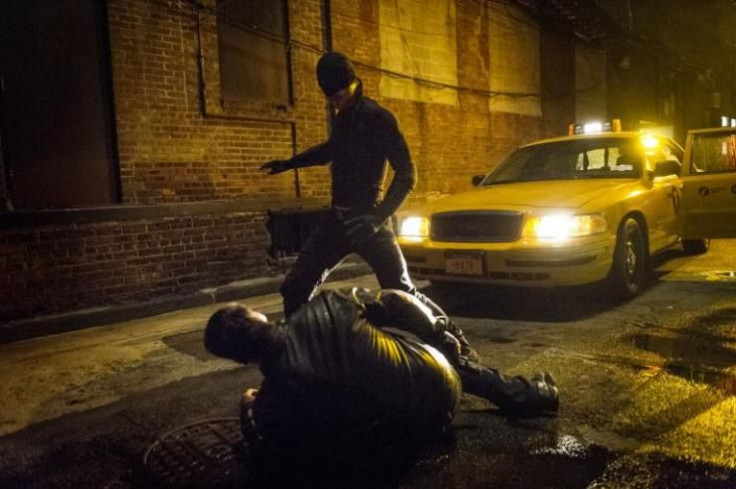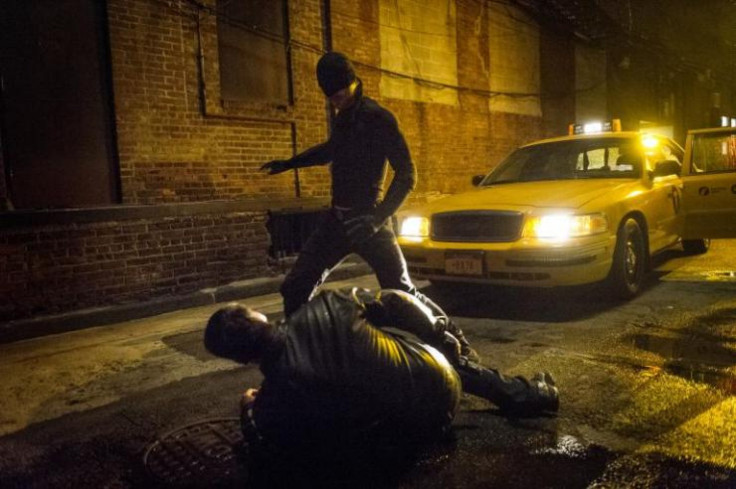Dear Cord-Cutters: The Cable Bundle Is Not The Enemy You're Looking For

Congratulations, America. We did it. We stood up to the media industry and cried, “No more channels we don’t want!” And the industry responded, “Fine.” We now have near-total control about what we watch, when we watch it and how we do so.
And now we’re going to pay.
Every network and its mother is creating its own TV-over-the-Internet subscription service, to take full financial advantage of your desire for choice and freedom from the tyranny of pay-TV providers.
To wit: CBS Corp. launched its fourth streaming video service on Tuesday: Smithsonian Earth, an offshoot of the Showtime-owned Smithsonian Channel. For $4 per month, the service will grant you access to exclusive brain-nourishing content. It joins CBS Corp.-owned subscription services CBS All Access ($6/month) and Showtime ($11/month, or $9/month bundled with a Hulu subscription), and the free, ad-supported CW Seed. Just a few hours ago, Univision clambered into the ring with Univision Now ($6/month).
Now, instead of one bill of $99/month -- and still being able to watch shows online and on-demand, since most networks accept Web viewers who have pay-TV subscriptions -- content providers can individually chip away at your bank account.
“Just the price of a latte, once a month,” NBCU Digital Executive Vice President Evan Shapiro promised journalists when unveiling NBC Universal’s comedy-centric streamer Seeso last month. He’s not wrong -- Seeso will only cost $4. That doesn’t sound too bad for the entire “Monty Python” collection, a bunch of shows from the NBC Universal library and some new exclusive content.

That's Not All
But we’re not just going to subscribe to Seeso, are we? We’re going to add in Netflix for “Marvel’s Daredevil” ($10/month). We need to be able to watch Amazon Prime’s “Transparent” ($99/year). And we are absolutely not going to miss out on the next season of HBO’s “Game of Thrones” ($15/month). Plus, ad-free Hulu is just fantastic ($13/month). And maybe your inner sixth-grader feels like giving Vessel $3 a month for the Web’s best “Yo Mama” jokes. (Yes, really.)
We’re now shelling out close to $50 a month just for programming. We’ve entered our credit card information into at least five services that may or may not be vulnerable to hackers, and bought at least one device, like Apple TV or Chromecast, to watch said programming on our TVs. We might have realized too late that not every streaming service we have is available on our device. We’re chagrined when we realize there’s some series overlap with these services, which means we’re paying twice for access to “Parks and Recreation.” We forgot our credit card number changed, and Netflix couldn't charge our account, and so we have to deal with that whole thing.
And when our Chromecast decides to stop working, we’re reduced to watching shows on our computer, like some kind of savage.

Sound familiar? We’ve simply become pay-TV providers ourselves, creating our own “bundle” of video content, complete with the same opportunities for technical snafus and customer service that stretches the definition of “service.”
The main difference is that if we want to watch live TV -- an estimated 90 percent of people do, according to research firm Nielsen -- we have to subscribe to one of the other TV-over-the-Internet services, like Dish’s Sling TV ($20/month for the basic package that includes networks like AMC and ESPN) or PlayStation Vue ($50/month for the basic package that includes Fox and Food Network).
Plus, we’re still not truly free from the tyranny of conglomerated cable companies. Over 60 percent of broadband customers subscribe through a cable provider like Comcast or Time Warner, according to the latest data from Leichtman Research Group. Add in not-strictly-cable Internet providers AT&T (which owns DirecTV) and Verizon (which provides FiOS), and that figure balloons to nearly 90 percent.

More For Less
In fairness, this sort of a la carte approach, picking and choosing what we watch, unencumbered by video subscriptions, dates back to 2005, when ABC began putting episodes of “Lost” and “Desperate Housewives” on iTunes for individual purchase the day after air.
The traditional networks aren’t necessarily bothered by this shift. CBS Corp. CEO and President Leslie Moonves loves it: “We're ready with CBS All Access and Showtime Over-the-Top, where consumers pay $5.99 and $10.99 a month, respectively, at better economics to us,” he told investors in an earnings call. Currently, according to media research firm SNL Kagan, CBS receives an average of $0.62 per month per cable subscriber. Moonves also said CBS will be part of any smaller cable packages companies offer to lure in more price-conscious consumers.
But in order to drive people to their proprietary services, big media companies are going to have to start starving out streamers they don’t own, like Netflix and Amazon Prime. Time Warner CEO Jeff Bewkes said as much on the company’s third-quarter earnings call: “We're evaluating whether to retain our rights for a longer period of time and forego or delay certain content licensing.” That could be a huge blow to streaming libraries, as Time Warner’s Warner Bros. Television is a prolific content producer.
Why Bundle?
The reason cable bundling came into existence in the first place was to make it financially viable for networks owned by the same company to live, even if they didn’t attract a whole lot of viewers. You want AMC? Well, you better pony up a whole $0.43, and $0.20 for IFC, $0.14 each for SundanceTV and black sheep WeTV, and $0.10 for BBC America.
Bizarrely, considering the capitalist backdrop, this kind of socialism has worked, and in fact has allowed some of the best programming on TV (SundanceTV’s “Rectify,” for example) to exist. It’s also kept you from having to pay $20 a month for ESPN. Currently, you pay $6.64 a month for ESPN, because every pay-TV consumer chips in, even those who don’t watch sports.
The best recourse for streamers might be, ironically, to form their own bundles. It’s already begun: Verizon FiOS tossed in a year of Netflix for some new customers in 2014, not unlike providers do with premium channels like HBO. AT&T U-Verse offers HBO and Amazon prime with an Internet subscription.
You might be getting it through a fiber optic cable, but The Bundle lives on. Whatever doesn't kill it makes it stronger -- and more expensive.
© Copyright IBTimes 2025. All rights reserved.






















